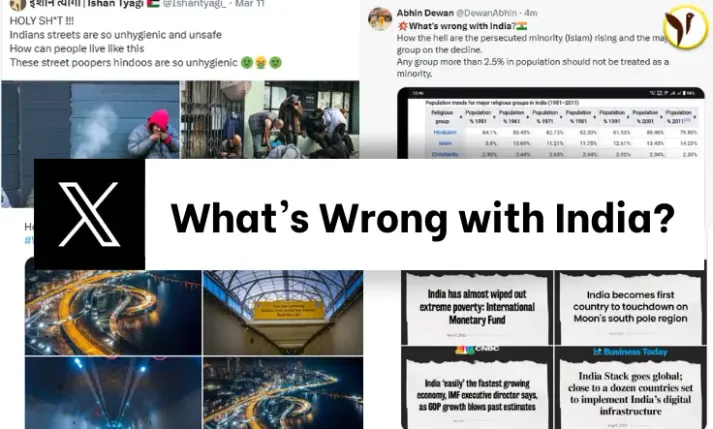On Tuesday, a social media platform, X, witnessed an overwhelming surge of posts bearing the phrase 'what's wrong with India.' This trend gained momentum rapidly, accumulating over 2.5 lakh posts within a short span of time. The catalyst for this viral trend traces back to a disturbing incident that unfolded in Jharkhand's Dumka about ten days ago.
The spark that ignited the 'what's wrong with India' trend originated from the gang-rape of a Spanish tourist in Dumka, which provoked widespread outrage across social media platforms. As netizens expressed their horror and dismay, a narrative began to emerge, portraying India in a negative light, amplifying existing stereotypes and biases.
In the wake of the Dumka incident, certain individuals seized the opportunity to vilify India, branding it as the 'rape capital of the world' and propagating derogatory stereotypes concerning public hygiene and societal norms. These narratives gained traction, fueling a wave of negative sentiments towards the country.
In a remarkable turn of events, Indian users on social media platforms, particularly X, adopted a counter-strategy to combat the disparaging portrayal of their nation. Employing the same phrase, 'what's wrong with India,' they juxtaposed images and videos depicting similar incidents from other countries, effectively challenging the biased narrative.
The swift and strategic response from Indian social media users underscored the potency of online platforms in shaping narratives and challenging misinformation. Despite initial concerns regarding algorithmic biases, the Indian online community successfully reclaimed the narrative, steering the discourse in a more balanced direction.
Notably, even the government's citizen engagement portal, MyGovIndia, joined the fray, highlighting India's success stories amidst the viral trend. This intervention served to balance the narrative, emphasizing the nation's achievements and resilience in the face of adversity.
The 'what's wrong with India' trend exemplifies the dynamic interplay between social media, public discourse, and national identity.
While initially sparked by tragedy and fueled by misinformation, the collective response from Indian netizens showcased the power of unity and strategic communication in reshaping narratives and reclaiming national pride in the digital era.







